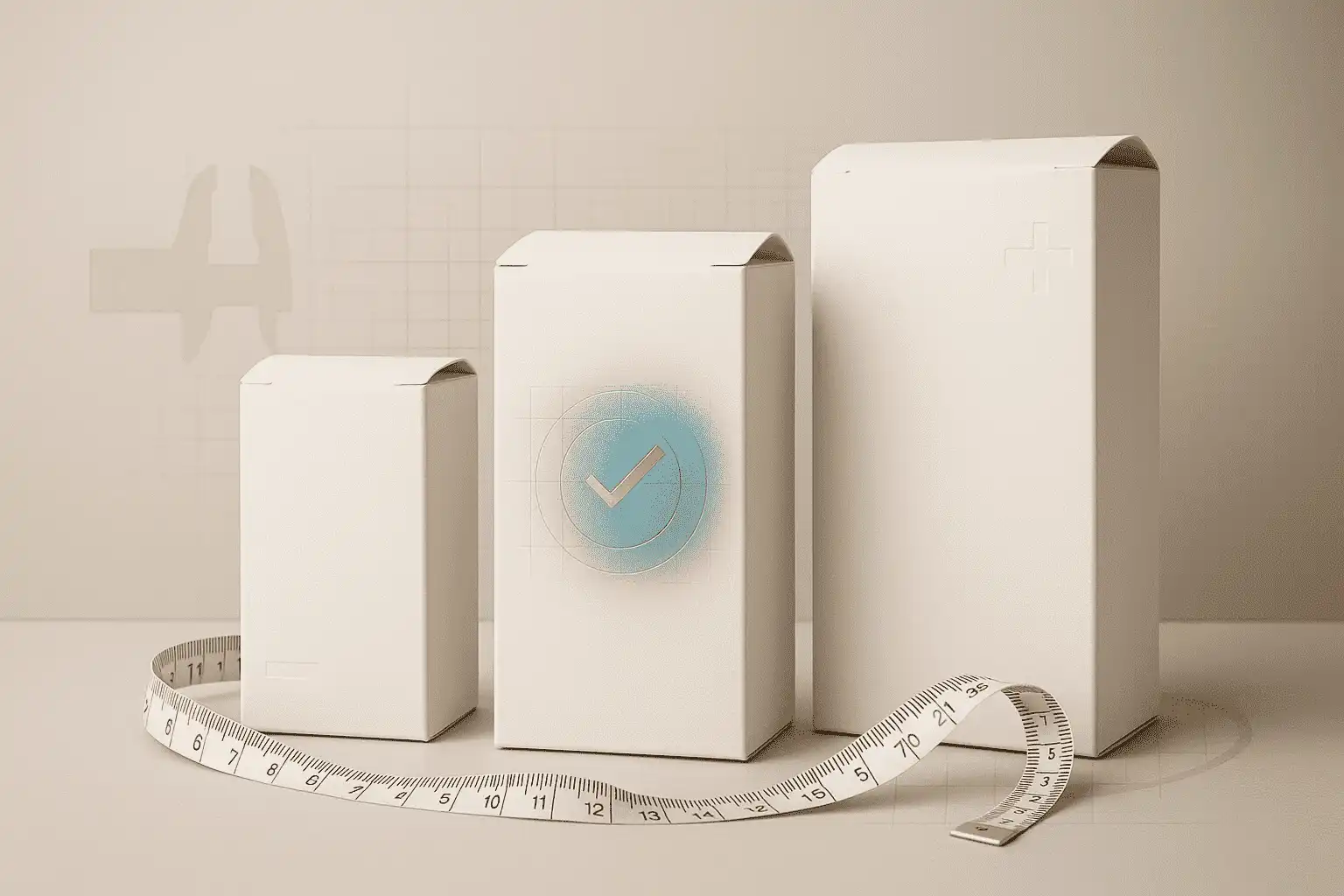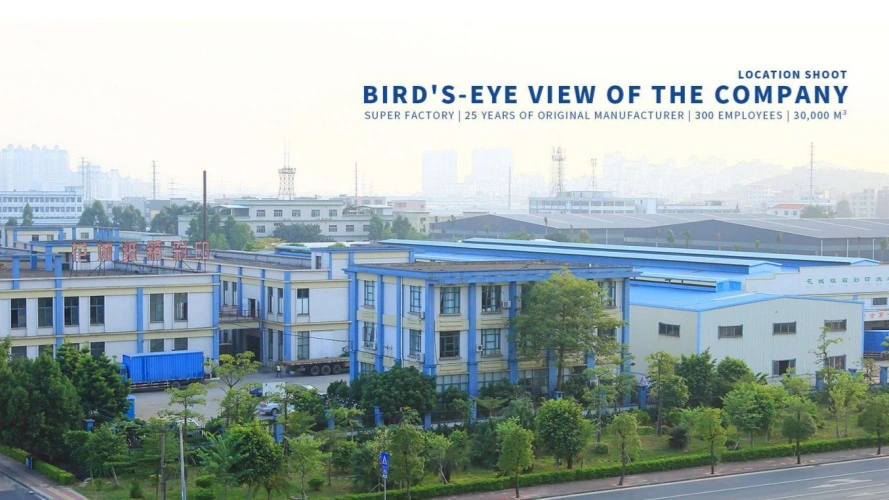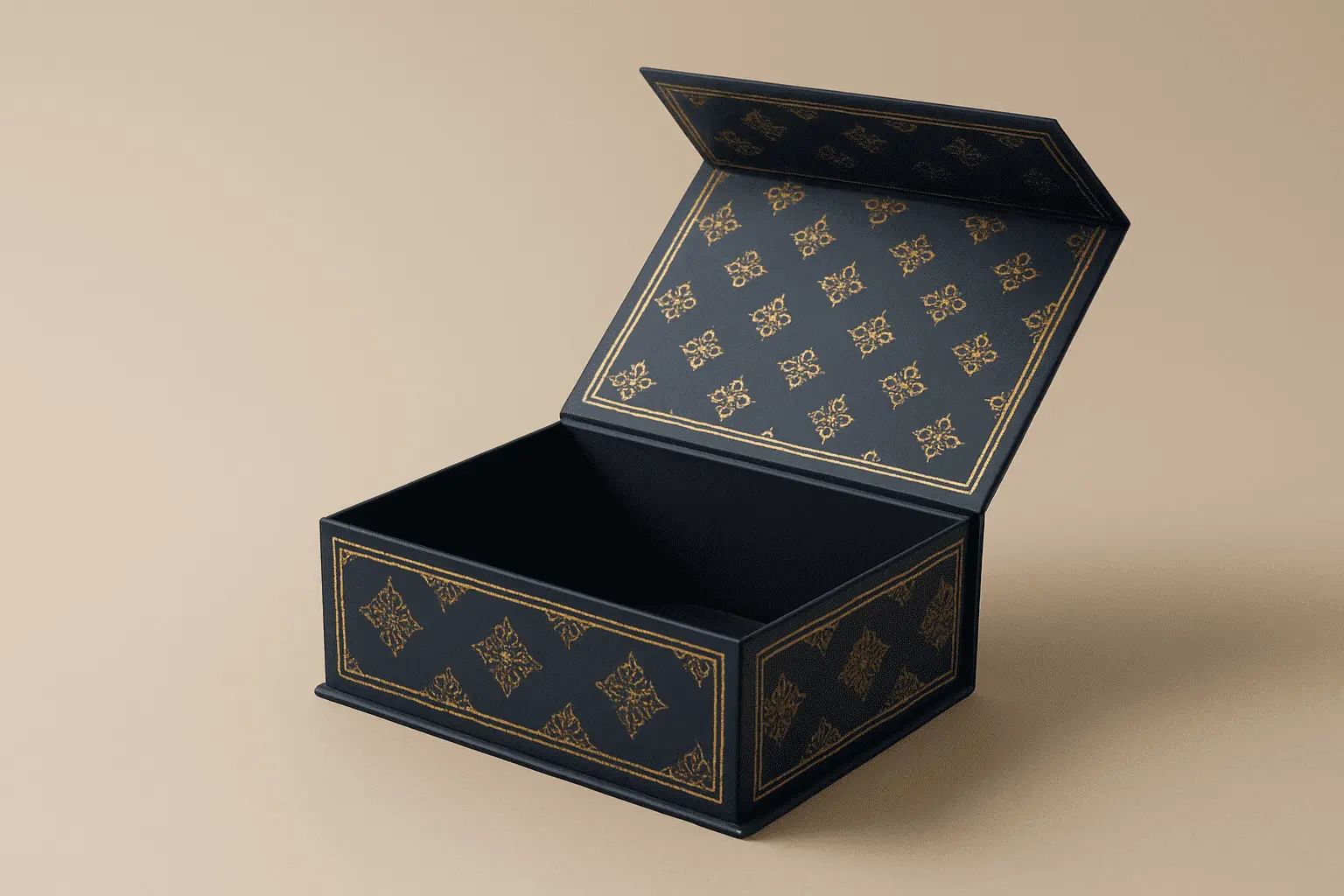The Importance of Choosing the Right Size for Your Product Box
Picture this: your premium cosmetic product arrives at a customer's doorstep in a box three times its actual size, rattling around like a marble in a shoebox. The customer immediately questions the product's quality before even opening it. This scenario highlights exactly why choosing the right size for your product box is absolutely critical for brand perception, cost efficiency, and customer satisfaction. The dimensions of your product box directly impact shipping costs, product protection, environmental sustainability, and the overall unboxing experience that can make or break your brand's reputation in today's competitive marketplace.

Why Product Box Sizing Directly Impacts Your Business Success?
The foundation of effective packaging lies in understanding that product box sizing is not merely about containment—it's about creating a strategic balance between protection, presentation, and profitability. When businesses overlook the importance of proper product box dimensions, they often face cascading issues that affect multiple aspects of their operations. Oversized packaging leads to increased shipping costs, excessive material waste, and poor storage efficiency, while undersized containers result in damaged products, customer complaints, and potential liability issues. Modern consumers have become increasingly sophisticated in their expectations, and they notice when a product box feels disproportionate to its contents. The psychological impact of receiving an appropriately sized package cannot be understated—it communicates professionalism, attention to detail, and respect for both the product and the customer. This first impression sets the tone for the entire brand experience and influences customer loyalty and repeat purchases.
-
The Hidden Costs of Incorrect Product Box Dimensions
Financial implications of improper product box sizing extend far beyond the initial packaging materials. Shipping costs are typically calculated based on dimensional weight, which means oversized packaging can significantly increase transportation expenses even for lightweight products. Companies often discover that reducing their product box dimensions by just a few inches can result in substantial annual savings when multiplied across thousands of shipments. Storage and warehousing costs also multiply when product boxes are larger than necessary. Inefficient use of warehouse space leads to higher rental costs, increased handling time, and reduced inventory capacity. Distribution centers charge based on space utilization, making compact, well-designed product boxes a crucial factor in supply chain optimization.
Material Selection for Optimal Product Box Performance
The choice of materials for your product box plays a crucial role in achieving the perfect balance between structural integrity and size efficiency. SBS C1S (Solid Bleached Sulfate – Coated One Side) represents an excellent option for premium packaging applications where print quality and structural strength are paramount. This material provides exceptional stiffness while maintaining relatively thin wall thickness, allowing for precise sizing without compromising protection. For brands seeking luxury appeal, SBS C2S (Solid Bleached Sulfate, Coated Two Sides) offers superior visual presentation with its double-sided coating capability. This material choice enables stunning graphics on both exterior and interior surfaces while maintaining the structural integrity necessary for properly sized product boxes. The premium feel of SBS C2S materials enhances the unboxing experience, making customers feel that the product box dimensions were carefully considered to showcase the product's value.
-
Sustainable Material Options for Environmentally Conscious Sizing
Environmental considerations increasingly influence product box sizing decisions, with CCNB (Clay Coated News Back) providing an economical solution that combines recycled content with reliable performance. This material option allows companies to optimize their product box dimensions while supporting sustainability initiatives and reducing environmental impact. Brown Kraft materials offer another environmentally friendly alternative that naturally complements minimalist sizing strategies. The rustic appearance of Brown Kraft packaging communicates authenticity and environmental responsibility while providing excellent structural properties for compact product box designs. This material choice resonates particularly well with organic, artisanal, and eco-conscious brands that want their packaging to reflect their values.
Design Considerations for Perfect Product Box Proportions
Creating the ideal product box requires careful consideration of both internal and external dimensions to ensure optimal fit and presentation. The internal dimensions must provide adequate space for the product while minimizing excess room that could allow movement during transportation. A general rule of thumb suggests allowing approximately 10-15% additional space around the product to accommodate protective materials without creating unnecessary bulk. External dimensions should align with standard shipping box sizes to maximize efficiency throughout the distribution process. Product boxes that conform to common shipping container dimensions reduce handling complexity and often qualify for better shipping rates. This standardization also improves stacking efficiency in warehouses and retail environments.
-
Structural Engineering for Size-Optimized Product Boxes
The structural design of product boxes must support the specific requirements of the contained product while maintaining minimal dimensions. Die-cutting techniques allow for precise customization of box shapes and sizes, eliminating unnecessary material while ensuring adequate protection. Advanced die-cutting capabilities can create complex internal structures that secure products without requiring additional protective materials. Corner reinforcement and closure mechanisms must be engineered to maintain structural integrity even when box dimensions are optimized for efficiency. The folding and gluing process requires careful attention to ensure that streamlined product boxes maintain their shape under various stress conditions during shipping and handling.
Testing and Validation of Product Box Sizing Decisions
Proper validation of product box sizing requires comprehensive testing under real-world conditions to ensure that optimization efforts don't compromise product protection. Drop testing, compression testing, and vibration testing should be conducted with various box sizes to identify the optimal balance between efficiency and protection. These tests reveal how different dimensions affect the box's ability to protect contents during typical shipping and handling scenarios. Consumer feedback plays a crucial role in validating product box sizing decisions, as customers provide valuable insights into the unboxing experience and perceived value. Focus groups and customer surveys can reveal whether sizing choices align with consumer expectations and brand positioning. This feedback helps companies understand the psychological impact of their packaging dimensions and make adjustments accordingly.
-
Quality Control Measures for Consistent Product Box Dimensions
Implementing robust quality control measures ensures that product box dimensions remain consistent throughout production runs. Precision measuring equipment and regular calibration procedures prevent dimensional variations that could affect product fit and protection. Statistical process control techniques help identify trends and variations in box dimensions before they impact customer satisfaction. Regular audits of finished product boxes should include dimensional verification, structural testing, and aesthetic evaluation to ensure that sizing optimization efforts maintain quality standards. These quality control measures prevent sizing-related issues from reaching customers and protect brand reputation.
Advanced Technologies for Product Box Size Optimization
Modern packaging design increasingly relies on sophisticated software tools and 3D modeling to optimize product box dimensions with unprecedented precision. Computer-aided design systems can simulate various box configurations and predict their performance under different conditions, allowing designers to fine-tune dimensions before physical prototyping. These technologies reduce development time and costs while improving the accuracy of sizing decisions. Automated measurement systems can analyze product dimensions and automatically generate optimal box designs that minimize material usage while ensuring adequate protection. Machine learning algorithms can analyze historical shipping data to identify patterns and recommend sizing strategies that reduce damage rates and shipping costs.
-
Integration of Smart Packaging Technologies
Smart packaging technologies are beginning to influence product box sizing decisions by providing real-time data on package performance during shipping. Sensors embedded in product boxes can monitor impacts, temperature changes, and handling conditions, providing valuable feedback for optimizing future packaging designs. This data-driven approach to sizing optimization helps companies make informed decisions based on actual performance rather than theoretical calculations. RFID and other tracking technologies require consideration during the sizing process, as they may influence internal dimensions and structural design. The integration of smart technologies must be balanced with sizing optimization goals to ensure that technological enhancements don't compromise packaging efficiency.
Industry-Specific Considerations for Product Box Sizing
Different industries face unique challenges and requirements when optimizing product box dimensions. Food and beverage packaging must consider freshness requirements, regulatory compliance, and temperature sensitivity when determining appropriate sizing. These products often require specific internal dimensions to accommodate protective barriers and insulation materials while maintaining efficient external dimensions. Electronics packaging requires precise internal dimensions to prevent movement while accommodating protective materials and regulatory requirements. The fragile nature of electronic products demands careful consideration of cushioning space within optimized external dimensions. Static-sensitive components may require special internal configurations that influence overall box sizing decisions.
Cosmetics and Personal Care Product Box Requirements
The cosmetics industry presents unique sizing challenges due to the premium nature of products and the importance of presentation in purchasing decisions. Product boxes for cosmetics must balance compact dimensions with luxury appeal, often requiring custom internal configurations to showcase products attractively. The unboxing experience is particularly critical in this industry, making sizing decisions crucial for brand perception. Personal care products often have unusual shapes or configurations that require custom product box designs to achieve optimal dimensions. Bottles, tubes, and applicators each present different sizing challenges that must be addressed while maintaining brand consistency and cost efficiency.
Global Shipping Considerations for Product Box Dimensions
International shipping requirements significantly influence product box sizing decisions, as different regions have varying regulations and cost structures. Customs documentation and inspection requirements may necessitate specific box configurations that affect internal dimensions. Companies shipping globally must consider these requirements during the sizing optimization process to avoid delays and additional costs. Regional preferences for packaging styles and materials can also influence sizing decisions for global brands. What constitutes an appropriately sized product box may vary between cultures, requiring companies to adapt their sizing strategies for different markets while maintaining operational efficiency.
Conclusion
Selecting the right size for your product box represents a critical business decision that impacts costs, customer satisfaction, and brand perception simultaneously. Through careful consideration of materials, design principles, testing protocols, and industry requirements, companies can optimize their packaging dimensions to achieve maximum efficiency without compromising quality or appeal.
Cooperate with GUANGZHOU FETCHING COLOR PRINTING & PACKAGING LTD.
As a leading China Product Box manufacturer with over 25 years of experience, GUANGZHOU FETCHING COLOR PRINTING & PACKAGING LTD. understands the critical importance of precise sizing in packaging success. Our 50,000㎡ facility houses advanced machinery including KBA106-(9+1) UV printing machines and Heidelberg XL162-6L printing equipment, enabling us to produce perfectly sized product boxes for diverse applications. With ISO14001, ISO9001, FSC, and Disney certifications, we ensure that every China Product Box we manufacture meets international quality standards.
Our team of over 10 experienced packaging engineers specializes in developing optimal sizing solutions for folding gift boxes, mailer boxes, display racks, and custom packaging across food, cosmetics, electronics, and personal care industries. As your trusted China Product Box supplier, we offer comprehensive design consultation, material selection guidance, and precision manufacturing services. Whether you need High Quality Product Box solutions for premium brands or cost-effective options for volume production, our China Product Box wholesale services deliver exceptional value.
Contact us at public@fetchingprinting.com to discover competitive Product Box price options and discuss your specific sizing requirements. As a premier China Product Box factory, we're committed to helping you achieve packaging perfection through optimal sizing solutions. Save this article for future reference - your success is our success!
FAQ
Q: How do I determine the optimal internal dimensions for my product box?
A: Measure your product dimensions and add 10-15% space for protective materials, ensuring the product fits snugly without excessive movement during shipping.
Q: What impact does oversized packaging have on shipping costs?
A: Oversized boxes increase dimensional weight calculations, potentially doubling or tripling shipping costs compared to properly sized alternatives.
Q: Can box sizing affect my brand's perceived value?
A: Yes, appropriately sized packaging communicates professionalism and attention to detail, while oversized boxes may suggest poor quality or waste.
Q: How often should I review and optimize my product box dimensions?
A: Review sizing annually or when changing products, shipping methods, or experiencing cost pressures to ensure continued optimization.
References
1. "Package Design and Dimensional Optimization in Supply Chain Management" - Smith, J.R., Journal of Packaging Technology, 2023
2. "Sustainable Packaging: Right-Sizing Strategies for Environmental Impact Reduction" - Chen, L.M., Environmental Packaging Research, 2024
3. "Cost Analysis of Packaging Dimensions in E-commerce Distribution" - Thompson, K.A., Logistics and Supply Chain Management Review, 2023
4. "Consumer Psychology and Packaging Size Perception in Retail Markets" - Rodriguez, M.P., Consumer Behavior and Marketing Research, 2024

Based on your location and order quantity, you will have the opportunity to receive a limited time free shipping promotion!

Corporate Purpose
